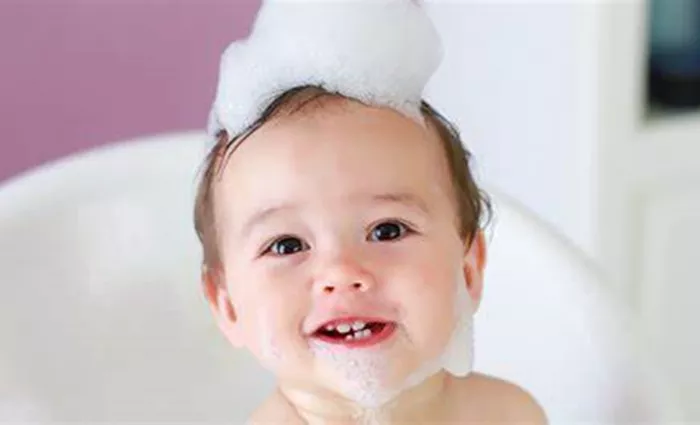Ensuring the proper hygiene of your newborn is crucial for their health and well-being. One common question new parents have is how frequently they should bathe their baby. This article explores the best practices for washing a newborn, addressing common concerns and providing practical advice to help you establish a safe and effective hygiene routine.
Understanding Newborn Skin Care
Why Newborn Skin Care Matters
Newborns have delicate and sensitive skin that requires gentle care. Proper hygiene helps prevent skin issues such as rashes, infections, and dryness. However, overbathing can strip the skin of its natural oils, leading to irritation and dryness. Therefore, finding the right balance in washing your newborn is essential for maintaining healthy skin.
Recommended Frequency for Bathing Newborns
General Guidelines
Initial Recommendations:
For the first few weeks after birth, newborns generally do not need daily baths. Bathing them about 2 to 3 times a week is usually sufficient. During this time, it is often enough to give sponge baths or use a damp washcloth to clean their face, neck, hands, and diaper area.
Umbilical Cord Care:
Until the umbilical cord stump falls off and the area heals (usually within the first few weeks), it is important to keep the area dry and clean. Sponge baths are recommended until the cord stump is completely healed.
Post-Healing Bath Routine:
After the umbilical cord stump falls off and the healing process is complete, you can transition to giving your baby a full bath. Continue to bathe your newborn about 2 to 3 times a week. Overbathing can lead to dryness, so it’s best to avoid daily baths unless needed.
See also: How to Wash Newborn Boppy Lounger: A Step-by-Step Guide
How to Bathe a Newborn
Step-by-Step Bathing Process
Gather Supplies:
Before starting the bath, gather all necessary supplies: baby bath tub or clean sink, mild baby soap, soft washcloth, towel, clean diaper, and clothes.
Prepare the Bath Area:
Ensure the bath area is warm and draft-free. The water should be lukewarm, approximately 100°F (37°C). Test the water temperature with your wrist or elbow before placing your baby in the bath.
Bathing Technique:
Start by gently washing your baby’s face with a damp washcloth, avoiding soap. Clean the rest of the body, starting with the least soiled areas and working towards the diaper area. Use a mild baby soap and avoid getting soap in the baby’s eyes.
Rinse and Dry:
Rinse your baby thoroughly with clean water, making sure to remove all soap. Carefully lift your baby out of the bath and wrap them in a soft towel. Pat your baby dry rather than rubbing to prevent skin irritation.
Special Considerations for Newborn Bathing
Caring for Sensitive Areas
Eyes and Ears:
Use a clean, damp washcloth to gently clean around the eyes and ears. Avoid inserting anything into the baby’s ears.
Diaper Area:
Pay extra attention to the diaper area, cleaning thoroughly but gently. Make sure to dry the area completely to prevent diaper rash.
Hair Care:
If your newborn has hair, you can gently wash it with a mild baby shampoo. Be cautious not to let soap get into their eyes. For babies with little hair, you may not need to use shampoo every time you bathe them.
Alternatives to Full Baths
Sponge Baths and Spot Cleaning
Sponge Baths:
For newborns who are not yet ready for full baths, sponge baths are a great alternative. Use a soft washcloth and lukewarm water to clean the baby’s body, avoiding the umbilical cord area until it heals.
Spot Cleaning:
On days when a full bath isn’t needed, spot clean your baby with a damp washcloth. Focus on areas that might need extra attention, such as the face, neck, and diaper area.
Managing Bath Time Challenges
Handling Common Issues
Fussiness:
Some newborns may be fussy during bath time. Try bathing them when they are calm and relaxed. Singing, talking softly, or playing gentle music may help soothe them.
Skin Sensitivity:
If your baby’s skin shows signs of dryness or irritation, reduce the frequency of baths and use a fragrance-free, hypoallergenic baby soap. Consult your pediatrician if you notice persistent skin issues.
Developing a Bathing Routine
Consistency and Safety
Creating a Routine:
Establishing a consistent bath routine can help your baby become accustomed to bath time. Choose a time that works best for both you and your baby, and try to stick to a routine.
Safety First:
Never leave your baby unattended during bath time. Always keep one hand on your baby to ensure their safety. Keep bath products and other items within reach to avoid leaving your baby unattended.
Conclusion
Bathing your newborn is an important aspect of their care that requires a balanced approach. For the first few weeks, sponge baths are typically sufficient until the umbilical cord stump heals. After that, bathing your newborn 2 to 3 times a week is usually adequate to keep them clean without over-drying their sensitive skin. By following safe bathing practices and paying attention to your baby’s needs, you can establish a comfortable and effective hygiene routine that supports their health and well-being. If you have concerns about your baby’s skin or bath time, consult with your pediatrician for personalized advice and recommendations.


